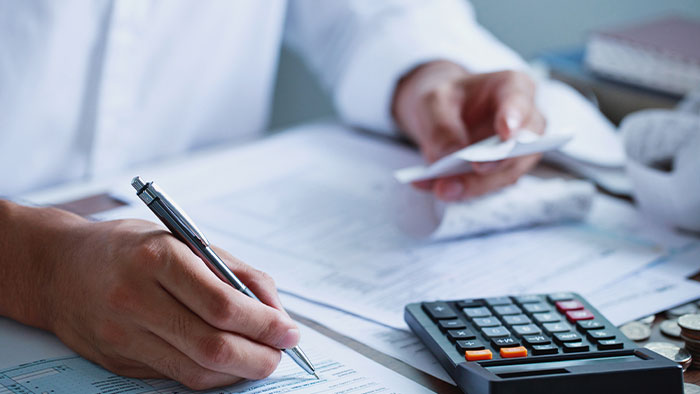IRA Building Energy Efficiency Incentives for Retail
Kristin Gustafson, Eide Bailly LLP

Energy Efficiency Deduction (Section 179D)
179D is a section of the tax code that provides a deduction of up to $1.88 per square foot for energy efficient commercial building property (EECBP) for projects completed on or after 1/1/2006 and 12/31/2022, and up to $5.00 per square foot for properties completed on or after 1/1/2023.
The Energy Efficiency Deduction was first enacted in the Energy Policy Act of 2005. After fifteen years of continuous expiry and renewal, it was finally made permanent as part of the Consolidated Appropriations Act of 2021 and enhanced by the Inflation Reduction Act in 2022.
A lot has changed since 2005, but the demand for an energy-efficient infrastructure has remained. According to the U.S. Energy Information Administration, residential and commercial building energy consumption accounted for 40% of all U.S. energy consumption in 2020.
To promote energy efficiency in buildings, 179D aims to financially incentivize making energy efficient building improvements (HVAC, lighting or building envelope) that may otherwise be left to factors such as cost and convenience.
Privately owned commercial buildings (including retail stores, warehouse and distribution centers, office buildings, etc.) that include energy-efficient components and were placed in service as of January 1, 2006 could benefit from the Section 179D Energy Efficiency Tax Deduction. The owner of the EECBP is eligible for the deduction, so leaseholders that own the basis in the energy efficient heating, cooling, lighting, or building envelope systems can take advantage of this deduction.
The Energy Efficiency Deduction in the Inflation Reduction Act (IRA)
Under the Inflation Reduction Act, the base deduction now starts at 50 cents per square foot for the 25% energy savings threshold, and increases by 2 cents per square foot for each percentage point above that, up to $1 per square foot.
Building owners can earn the bonus deduction if they pay prevailing wages and meet apprenticeship requirements on these jobs. This bonus deduction starts at $2.50 per square foot at the 25% threshold, and increases 10 cents per square foot beyond that, up to the $5.00 maximum.
Prior to the IRA, a building could take the 179D deduction once over the course of its life. IRA now provides the ability to take the 179D deduction every 3 years – assuming a renovation to the EECBP has taken place. As before, the deduction is capped at the cost of the renovated property, meaning that the total deduction cannot exceed the total cost of the renovation, including labor costs.
How 179D Has Provided One Fortune 500 Company a $26,000,000 Tax Deduction
For one Fortune 500 company, the 179D deduction is a way to make necessary building improvements while realizing significant tax savings. With a 46-million-square-foot portfolio spanning over 350 U.S. properties, there is a continual need for maintenance and renovations.
The Eide Bailly Energy Incentives Team helped them realize a $26,000,000 tax deduction.
Step 1: Preparation
The team works to aggregate all documentation for a building (blueprints, plans and specifications). After they have reviewed the documents, they schedule a site visit with the plant manager.
Step 2: Site Visit
The goal of the site visit is to understand how the building operates as a system—specifically, the mechanicals, heat and air conditioning, hot water, ventilation, interior lighting and building envelope. The team works to document each facet of the building so they can pass the data to our energy modelers.
Step 3: Energy Modeling
Energy modelers use AutoCAD and Department of Energy and IRS-approved software to compare the building model to a reference model and determine if the building has 50% or greater energy efficiency than the reference model (which is required to qualify for the deduction).
Step 4: Certification
Professional Engineers provide a certificate of compliance. The certificate of compliance is then attached to Form 3115 and submitted to the IRS, where an adjustment is made to reflect the deduction.
Step 5: Repeat
Each building is subject to the same process. Because of their large portfolio, this project has been divided into four phases— meaning there is substantially more tax savings in store for them.
Clean Energy Investment Tax Credits (Section 48)
Retailers that invest in clean energy technology for their properties can take advantage of the Section 48 tax credits to help offset the cost of the purchase and installation. These technologies include wind turbines or microturbines, waste energy recovery, electrochromic glass, microgrid controllers, combined heat and power systems, and geothermal heating and cooling systems.
The basic credit is 6% of the total cost of materials and installation, and that value increases to 30% if prevailing wage rules are met. If the steel, iron, or other manufactured products that comprise the project are produced in the United States, an additional domestic credit of 10% is available.
Making Sure You Get the Maximum Benefit
A trusted advisor can help you take full advantage of energy efficiency credits and deductions. Eide Bailly offers energy efficiency incentives services with Professional Engineers, energy modelers, construction specialists, and CPAs all in-house and at the ready to help you maximize your energy credits and deductions. Reach out to author Kristin Gustafson, PE, CEM, BEMP, LEED AP, Director of Energy Efficiency Incentives, Eide Bailly LLP for more information.
Section 179 is one of many new incentives created by the Inflation Reduction Act to speed the transition to a clean energy economy RILA is actively monitoring. If you have any further questions about RILA’s work in this space, please contact RILA’s Erin Hiatt, VP of Corporate Social Responsibility or Austen Jensen, Executive Vice President of Government Affairs for more information.


